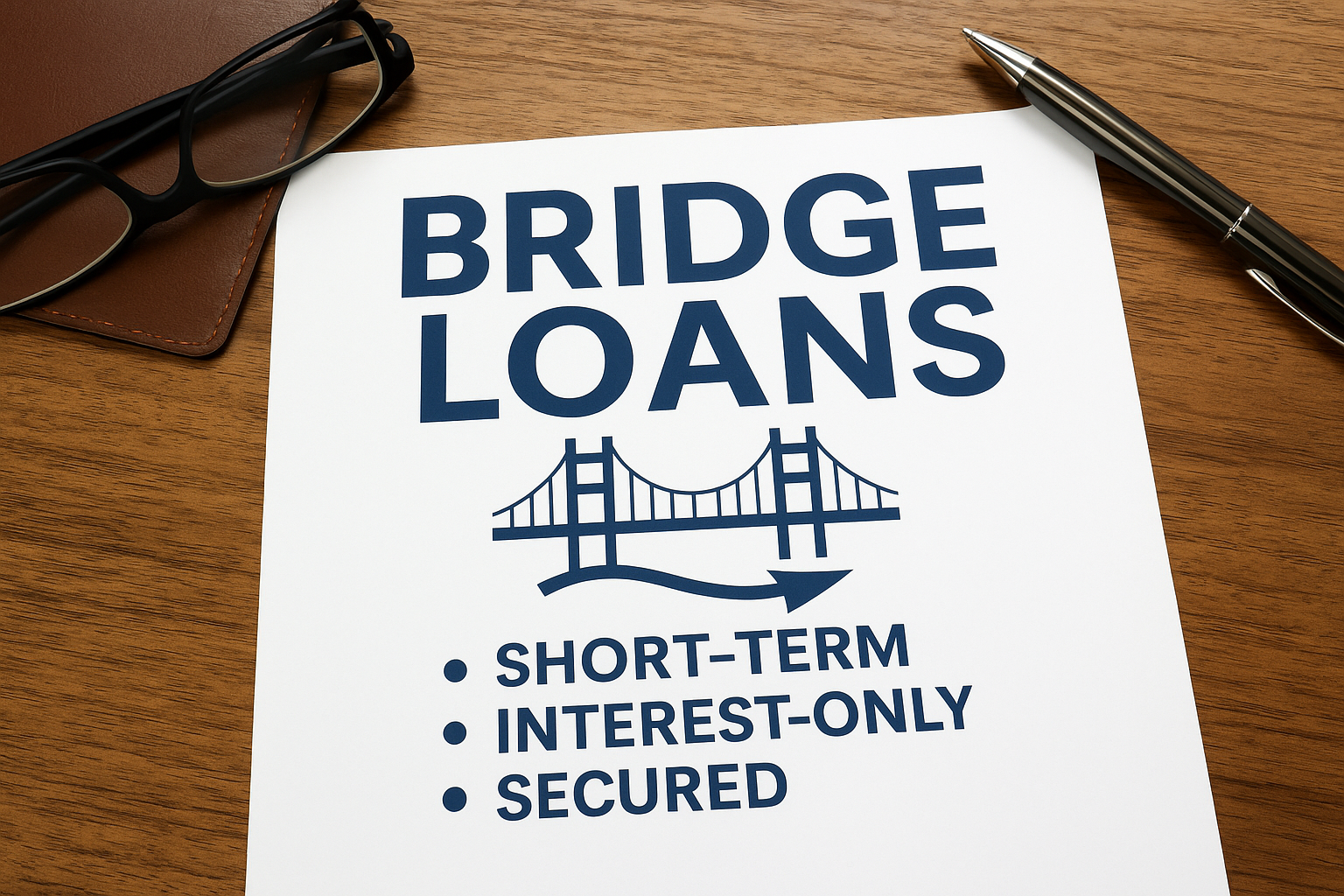In the world of finance and real estate, timing is everything. Whether you’re buying a new home before selling your current one or acquiring business property while waiting for permanent financing, delays can disrupt even the most well-laid plans. That’s where bridge loans come in. Designed to “bridge” short-term gaps in funding, these loans provide immediate capital when traditional financing isn’t yet available. But while bridge loans can be incredibly useful, they also come with higher risks and costs. Understanding how they work—and when to use them—is essential for making smart financial decisions.
A bridge loan is a short-term financing solution typically lasting six months to a year, though some may extend up to 36 months depending on the lender and situation. These loans are often secured by collateral—most commonly real estate—and are intended to offer quick access to funds while a more permanent source of financing is arranged. Borrowers use bridge loans to avoid losing opportunities due to financing delays, such as purchasing a new property while waiting for the sale of an existing one or closing a business acquisition pending final approval of long-term funding.
In the context of real estate, a common use case is when a homeowner wants to buy a new house but hasn’t yet sold their current one. Instead of making a contingent offer—which can be less appealing to sellers—they use a bridge loan to finance the down payment or purchase. The loan is then repaid once their current home sells. For businesses, bridge loans are used to cover temporary cash flow shortages, purchase inventory, or fund critical expansion initiatives while longer-term financing is being finalized.
Key features of bridge loans include rapid approval and funding, which can occur in a matter of days or weeks—significantly faster than conventional loans. This speed comes at a price, however. Bridge loans usually have higher interest rates, often ranging from 6% to 12% or more, and may include origination fees, closing costs, and early repayment penalties. These added expenses reflect the lender’s increased risk and the short-term nature of the loan.
Because of these higher costs, bridge loans are best used when there is a clear exit strategy—that is, a known and likely source of repayment, such as a pending home sale, permanent loan approval, or a predictable revenue stream. Without a solid plan in place, borrowers could find themselves in a worse financial position, potentially needing to refinance into another short-term loan or risk default.
Bridge loans are typically easier to qualify for than traditional mortgages or business loans, especially for borrowers with strong equity positions or valuable collateral. However, creditworthiness still plays a role. Lenders assess the borrower’s income, debt-to-income ratio, and repayment ability to minimize default risk. In many cases, bridge loans require interest-only payments during the term, with the full principal due at maturity. This structure allows borrowers to manage cash flow while securing permanent financing or liquidating assets.
Despite their advantages, bridge loans aren’t suitable for every borrower. For homeowners, the pressure to sell quickly to repay the loan can be stressful—particularly in a slow or unpredictable housing market. If the current home doesn’t sell within the expected timeframe, the borrower may face overlapping mortgage payments or foreclosure risk. For businesses, relying too heavily on bridge loans without securing long-term funding or stabilizing cash flow can lead to financial overextension.
In recent years, the rise of private lenders, online platforms, and alternative funding sources has made bridge loans more accessible. However, it also increases the variability in terms, transparency, and reliability. Borrowers should perform thorough due diligence, read all contract terms carefully, and consult with financial advisors or attorneys before entering into any bridge loan agreement. It’s also wise to compare bridge loan terms against other options, such as home equity lines of credit (HELOCs), personal loans, or business lines of credit, which may offer lower rates or more flexible repayment structures depending on the scenario.
In conclusion, bridge loans can be powerful tools for individuals and businesses navigating complex financial transitions. They offer speed, flexibility, and strategic advantages—especially when timing is critical. But like any financial instrument, they must be used wisely, with a clear understanding of the risks, costs, and repayment expectations. When applied under the right circumstances, a bridge loan doesn’t just close a gap—it opens the door to new opportunities.
